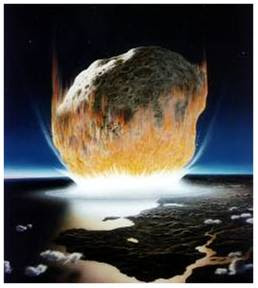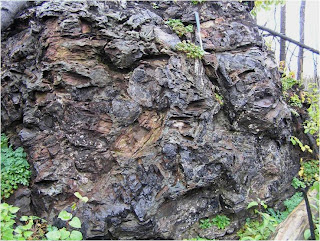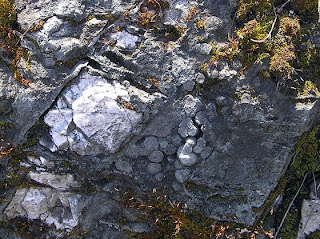(All photos courtesy of Mark Jirsa)
Let’s just put it out here….geology is one of the last things I ever wanted to study in college. For a time Shelby was planning to grow up to be a geologist –so I tried. We bought The Rock Picker’s Guide to Lake Superior, and we’d attempt to identify the rocks—but I also brought some hammers and safety glasses for Daniel..and then we’d end up trying to find geodes and really just smashing up all the rocks we could. Or we’d pull out the glue and paint and take away sculptures…I’m sad to say, we were high impact amateur geologists. But let me tell you, we sure could chug.
This summer, Geologist Mark Jirsa brought University students to travel to Bingshick and study the rock formations —apparently it is a geologist’s dream out there. He chose that lake because he said there were rocks from 3 major time periods in history–and he was looking for some specific junction, revealed by the fires of years past. I was politely curious. But that guy has a passion for this stuff, and it’s fairly contagious. He identified some sort of junction this year on Bingshick–something that proved a theory that he’s had for 10 years–about rocks from different time periods (and maybe this photo illustrates that, and maybe it doesn’t—)… but now he has proof.
Pretty soon, I was enthused right there with him–in part because it’s fun to see someone so zealous about his work, and in part because he kindled my interest—in rocks.
So, when he was giving a presentation last week–on the nearby Gunflint Narrows Road, we all arranged to go.
In May of 2007, the Ham Lake Fire foiled Mark’s geology field trip to Seagull Lake. The closest he was allowed to go that week was the Narrows Road. So he started exploring–and made an important discovery—evidence of  a meteorite that hit the earth in Sudbury Canada. The event sent the earth into a nuclear winter—1.85 billion years ago.
a meteorite that hit the earth in Sudbury Canada. The event sent the earth into a nuclear winter—1.85 billion years ago.
We saw some braccia formations; layers rock that was broken and stirred up as a result of the shock waves. It seems there are several local fire places made of that stuff. These braccia formations were made from rock already here, but we also looked at ejecta—the lappilli formations made from rock ejected upon impact (apparently not part of the monster meteorite–which vaporized from all that energy)
The pea shaped lappilli were formed because the tremendous energy and material ejected into clouds—like hail stones are created during a thunderstorm…. “stone hail” was formed during that event, and some of them rained over the Gunflint Lake area. (Stefan came up with the term stone-hail–and we thought that was clever)
“stone hail” was formed during that event, and some of them rained over the Gunflint Lake area. (Stefan came up with the term stone-hail–and we thought that was clever)
At any rate—it appears to be a significant geological discovery right here, and I’ve got to credit Mark for making that snippet in time, almost 2 billion years ago, come alive for me. And I’ll also admit, my hike yesterday was enriched by the curiosity about the rock formations I noticed. Hoping he’ll be back again, and if you have the chance to hear him, you might want to take it-even if you think you might not be interested!

